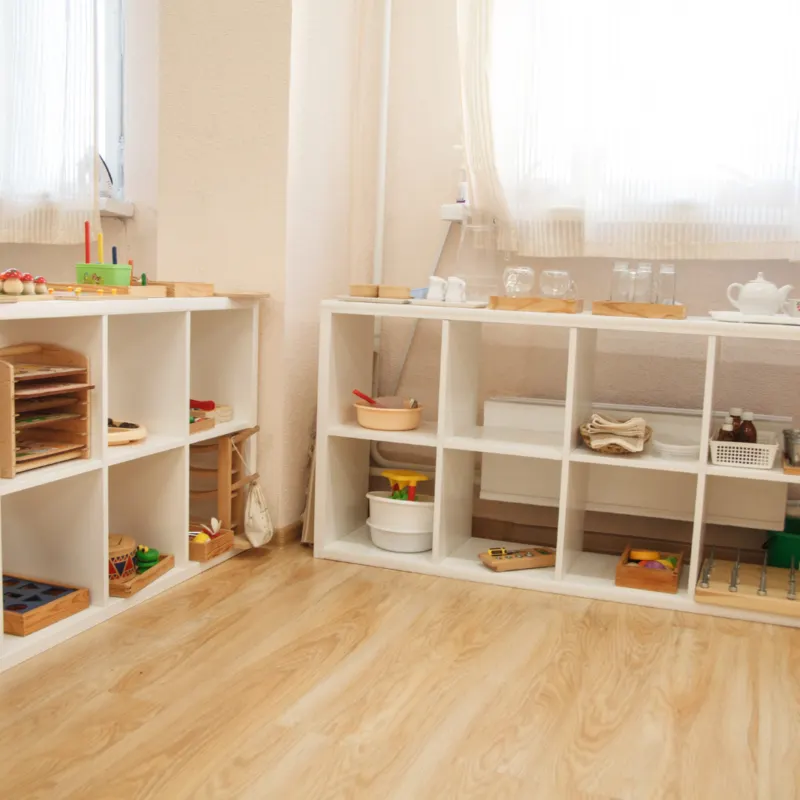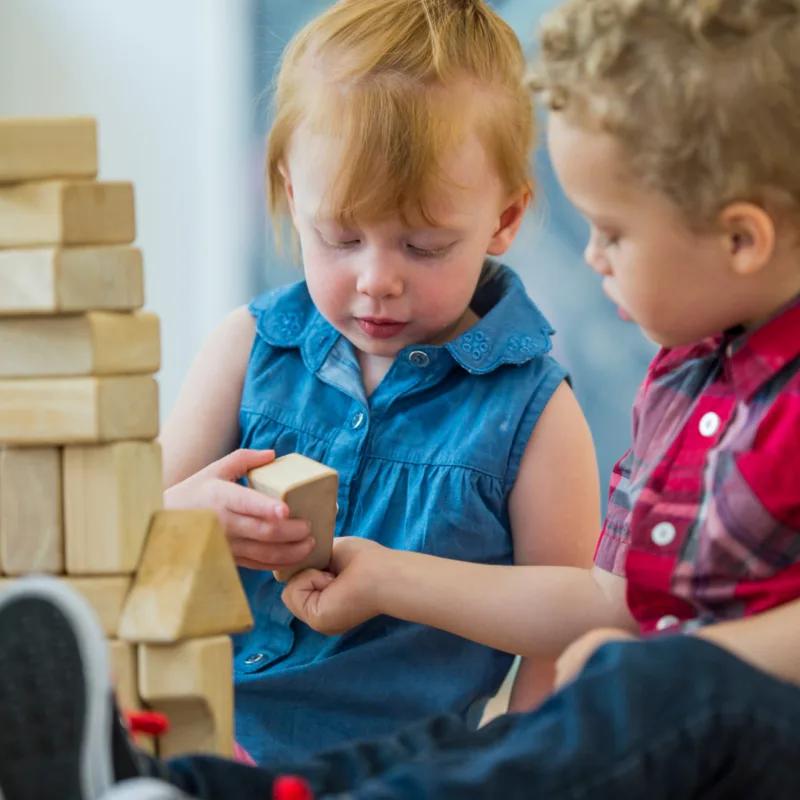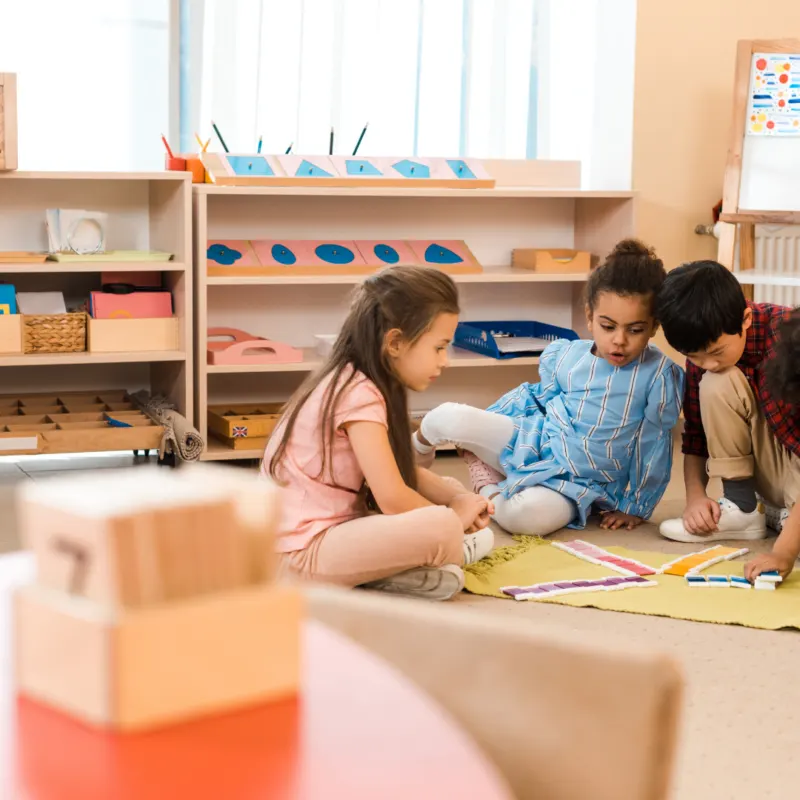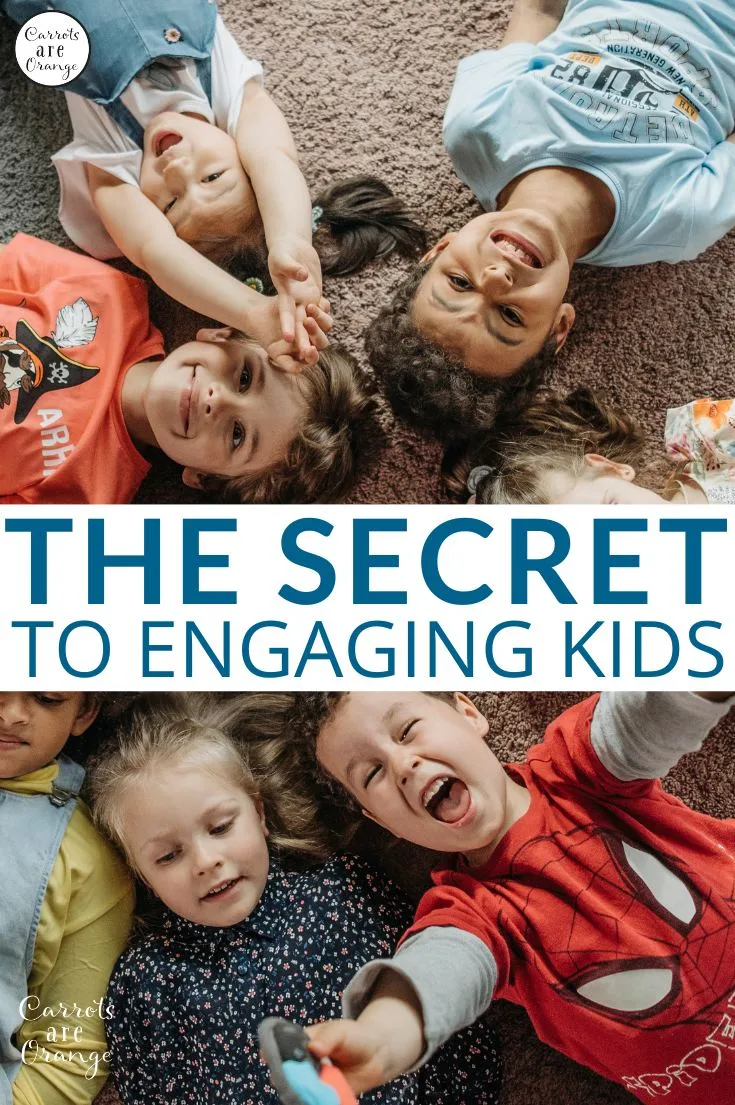You want to engage your kids in learning, but they just aren’t interested. What’s the secret to getting them excited? Turns out, the answer is more straightforward than you might think. All you need is a little creativity and some engaging activities. Check out these ideas to get started!
So what are the secrets to engaging kids?
I know the feeling of staleness when it comes to a child’s space.
Sometimes you have to mix it up to ignite a child’s interest again.
Then you can breathe a sigh of relief that you’re pretty darn good at this teaching kids thing, that kids aren’t put to sleep by your classroom, and better yet, that great joy is happening within the walls.

9 Secrets to Engaging Kids with Montessori Shelves
Rotate Items and Trays
A fundamental principle of Montessori education is that children should have the opportunity to explore and interact with their environment. This is why it’s essential to regularly rotate items and trays in a Montessori playroom or classroom.
Rotation doesn’t have to mean buying new things all the time. Kids enjoy rediscovering items they haven’t seen for a while. Engaging kids in this way is not only inexpensive, but it is also practical!

Doing this ensures that children always have new and exciting things to explore. It also helps to prevent them from becoming bored or frustrated with their surroundings.
Furthermore, rotating items and trays can help develop a child’s fine motor skills and spatial awareness. So if you’re looking for ways to inject fresh energy into your Montessori playroom or classroom, consider rotating items and trays regularly.
Only One of Each Item on the Shelf
In a Montessori playroom or classroom, you will often see only one of each toy or material on the shelves. This is because Montessori classrooms believe in promoting independence and self-directed learning. Children with only one of each item are more likely to choose what they want to play with and are less likely to fight over toys.
This also allows them to focus on playing with the toy instead of worrying about sharing it with others. As they play, they learn how to take care of the toys and put them away when they are finished.

In addition, having only one of each toy encourages children to be more creative, as the number of identical items available does not limit them.
Finally, children learn to respect one another workspace and time. This hands-on learning approach helps children develop lifelong skills they can use both in and out of the classroom.
Less is More
The Montessori method of education is founded on the principle that less is more. montessori teachers believe that children learn best through self-directed play and exploration. As a result, Montessori classrooms are designed to be minimally decorated, and Montessori playrooms contain few toys.
This simple environment allows children to focus on the task and explore their interests without distractions. montessori teachers also use a hands-on approach to learning, incorporating materials that can be manipulated and explored. This tactile approach helps children to engage with the material and internalize the concepts being taught.
In sum, the Montessori method relies on simplicity and hands-on learning to create an environment where children can thrive. So, populate your shelves and take at least 1/4 off the shelves. Kids get overstimulated easily.

Neat and Orderly
A Montessori playroom or classroom is typically neat and orderly. All materials are organized on shelves or baskets, and the furniture is arranged to create an inviting and comfortable space. This environment is intentional, as Montessori teachers believe it helps promote concentration and focus.
When children can find what they need quickly and easily, they are more likely to stay engaged in their work. Additionally, a clean and well-organized space helps to foster a sense of calm and peace.
For Montessori teachers, creating a peaceful environment is essential for promoting optimal learning. So, take time to lay out the shelves in the morning, clean up throughout the day, and tidy up at the end of the day.
Make it Seasonal
Creating a Montessori playroom or classroom is an excellent way to encourage your child’s natural love of learning. However, it’s also essential to ensure that the space is seasonal.
The Montessori method is based on the idea that children learn best through hands-on experiences with the world around them. Seasonal changes provide a perfect opportunity for Montessori-style exploration and discovery. For example, as the weather gets colder, you can bring in some snow for your child to touch and explore.
Use leaves and other natural materials in the fall to create various seasonal crafts. In the spring, focus on rebirth and life cycles. By making the most of the changing seasons, you’ll help your child get the most out of their Montessori education.
Keep it fun and festive with the seasons and special occasions that come and go throughout the year.

Assess the Mood and Interests of the Class
Follow the child’s lead and, through observation, create shelves customized to the children. Interests change throughout the year so pay attention to what might hook that child into a work!
In a Montessori playroom or classroom, the environment is carefully designed to meet the needs of the children. A critical aspect of this is assessing the mood and interests of the class. This helps the teachers create an optimal learning experience for all children.
By taking into account the mood and interests of the class, Montessori teachers can create a more personalized learning environment. In addition, this approach helps to foster a sense of community in the classroom.
By taking into account each child’s individual needs, Montessori teachers can create a learning environment that is genuinely tailored to the needs of the individual child.
Pick a Theme
Themes don’t have to be based on seasons or holidays. The “march of the units” is not always the best way to lay out shelves, or at least the best way for a particular teacher or parent. Choose a theme like space, earth day, sea turtles, or other topics.
Lean into Extensions and Variations
Use your creativity, or do some research in online Montessori groups and blogs. There are loads of fantastic extension and variations ideas. Kids love extensions. Variations & extensions keep the learning exciting and moving forward!
Access Blogs for New and Unique Ideas
I have discussed this in my Montessori in the Home posts. Montessori can be expensive. So, sticking with strict Montessori materials may not be the way to go. So, find ways to reuse materials differently or explore DIY Montessori ideas.

So, what is the secret to engaging kids?
The answer is simple – and it’s something that all great teachers know. You have to make learning fun. And you have to find a way to connect with each student on an individual level. When you can do that, magic happens.
Kids are suddenly excited about learning and start to see themselves as capable and successful learners.
What’s your secret to engaging kids in your classroom or homeschool environment?
Marnie

